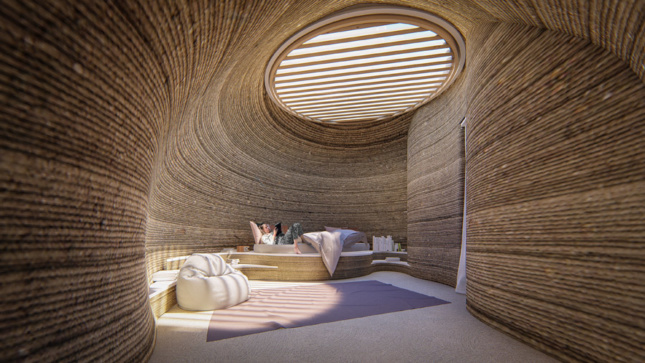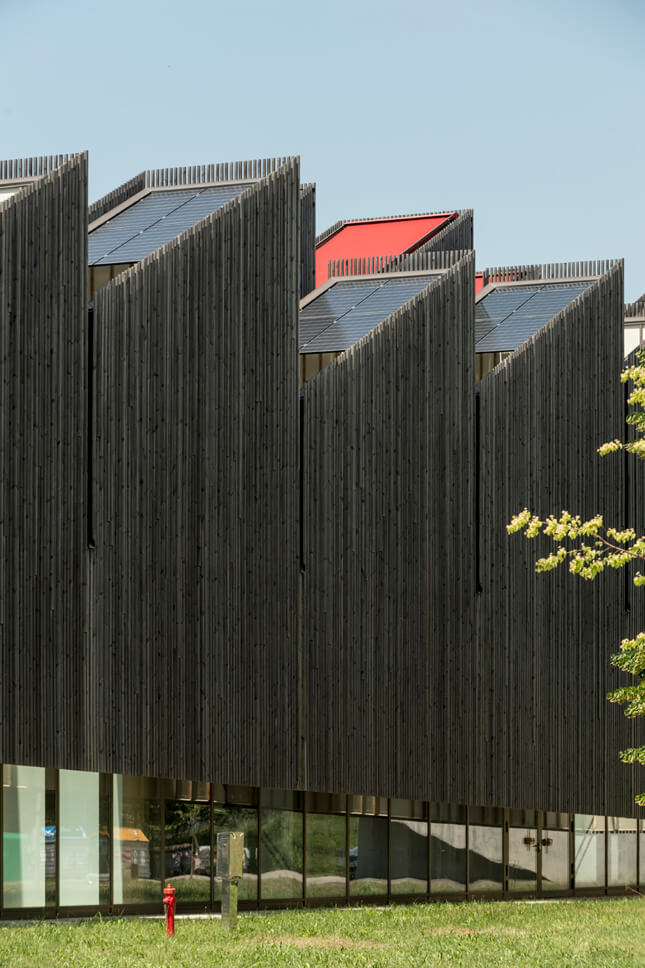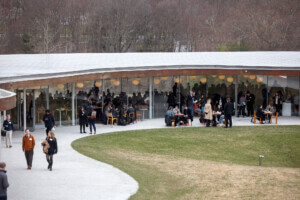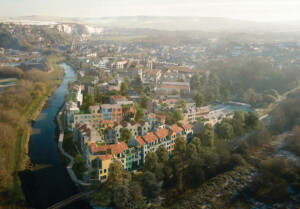A couple of months ago, jellyfish made their appearance in Venice’s now crystal-clear canals. Rome’s Spanish Steps appeared naked without hordes of tourists trampling them. The coronavirus pandemic forced millions to stay at home and overcrowded, noisy, and polluted Italian cities became cleaner, or at least, quieter places almost overnight. This temporary “restoration” has been welcomed by environmentalists, but it came at a high social cost: Much of the population is struggling to quarantine in tiny apartments without easy access to open-air and stuck with limited social interactions. Mario Cucinella, one of Italy’s leading advocates for sustainable architecture, believes the pandemic has heightened the contributions that building and urban design can make in a post-pandemic world. In the following interview, he imagines new models for housing that give priority to courtyards, balconies, and other social spaces. Cucinella, who recently unveiled a project to 3D print dwellings using locally sourced clay, is based in Bologna, Italy, and draws from his personal experiences there.
Guglielmo Mattioli: In your new book Building Green Futures, you lay out a couple of interesting strategies for making cities greener. Which are the most urgent?
Mario Cucinella: The idea is that the future hides in the folds of the past. So if we want to build a zero-emission city, we should look at what we did for the past 2000 years without using oil for energy and learn from it. And then we talked to Stefano Mancuso, a neurobiologist that studies plants. Buildings, like plants, don’t move, but plants have collective intelligence. Perhaps we should learn something from them, too.
The mayor of Paris, Anne Hidalgo, recently introduced the idea of the “15-minute city,” where services and public spaces are concentrated within a 15-minute radius by bike or walking. You have developed a similar idea—how do you think it applies to Bologna, and elsewhere?
In Bologna, you can go everywhere in 15 minutes. We are starting to plan and design keeping in mind a 15-minute radius so to provide services and quality public spaces within this radius. The centralized model works poorly in a pandemic situation. We need to redistribute functions all over the city. Which also means that every neighborhood should have a diverse socio-economic population. There is also a public health benefit. In a 15-minute radius it’s easier to create social connections that we know increase overall health. This redistribution makes for a more resilient city. Bologna, which traditionally invested in social housing and social mix throughout the city, is now in a better position than others to restart after the pandemic.

In 2018, you curated the Italian Pavilion at the Venice Architecture Biennale, focusing particularly on lesser-known cities and inner territories. These neglected places now seem to be the best positioned in a post-pandemic world.
We talked for years of this idea of going back to live in the countryside, in small villages, but it felt more like a fairytale than a real possibility. Now small-to midsize cities are actually the best suited for life in a post-pandemic world. What we call “proximity territories,” places that are 10 to 20 minutes away from larger urban centers, are very interesting right now as we see how too much concentration can have consequences under a pandemic.
Also, small towns are usually more connected to nature because they are often surrounded by agricultural land and natural reserves. When we imagined green cities, we thought of bringing the green component inside the city, whereas we have already lots of green between them. But clearly to live in small towns you need a certain kind of infrastructure, internet connections, and fast trains to major centers, for example. At a distance the countryside looks idyllic, but it is a place where it is difficult to do everything, where there is no post office, there is no school, bus and train schedules are not coordinated. So if you really want to invest in small-to-midsize centers where the air is cleaner, you need a certain kind of infrastructure and a serious agenda to create jobs. Because not all jobs can be done remotely.
The point is to establish what the priorities are. If you are looking for a better quality of life, a shared welfare system, and better public health, then small-to-midsize cities have potential. If you are looking for profit, less so.
For years we said that density was a more sustainable choice to sprawl. What now?
Well, the density that we usually think about is the product of a 20th-century idea of urban density, in which the megacity was—and in part still is—a dream and a place of opportunities. We used to say that Hong Kong is sustainable because it is so dense. People live close to where they work and interact, they don’t need to commute much. But that density is now a problem. Plus, density in modern cities has more to do with speculating on land values than a real pursuit of a better quality of life. Living in a 300-square-foot apartment is not ideal. I would rather live in the countryside around Bologna and commute by train to the city. I’d be much happier. We are seeing a little bit of a paradigm shift here. In the last 30 years many architects flaunted the idea of living stacked in skyscrapers. Now we are starting to question this model.
With so many forced to stay home in recent months, the size and quality of a house can make all the difference.
The pandemic exposed the fact that [market-driven developments] are different from what people actually desire. Developers build units and price them according to the number of rooms: kitchen, bedroom, living room, etc. But perhaps I don’t care about the bedroom and would love a giant living room instead? I hope that post-pandemic, apartments will be designed more according to people’s desires. Who suffered the most during the quarantine were the ones who lived in tiny apartments and had no open air space, or a balcony or a terrace. We saw that people used their balconies to step out, to break the confinement of what had become effectively a jail, and they were able to socialize. So I make a step backward and say: Wouldn’t it be nice if everybody had a balcony? Wouldn’t it be nice to have an apartment with a minimum standard size that’s big enough to live, or survive, comfortably? We need to build better residential spaces and better cities. Think of the apartment building. In a pandemic that is your space of reference. Wouldn’t it be nice if all buildings had a communal shared space? A garden roof, a courtyard?
The truth is that most apartment buildings are ugly.
How so?
Let’s be real. The real estate market is a highly speculative market that doesn’t really make apartments for people’s needs. Most buildings are [built by] cutting costs and maximizing revenues and this is the result. I think the state should start making social housing again. We did social housing before. After WWII we had beautiful social housing projects with balconies, courtyards, and common areas designed by architects. If you leave [housing] in the hands of speculators, clearly they’ll seek to maximize the gains. What can you expect? But if the state opens a new “season” of social housing, the private developers will follow and match the new quality standard.
What really struck me were all those people stuck in tiny apartments, perhaps in narrow alleys with no light in old town centers. Living in a healthy and decent house is the first step of a social structure. It’s like education. We need a new season of housing led by architects.

Is that the role you see architects playing in a post-pandemic world?
When the pandemic hit, cities became empty, the air was cleaner, and everyone consulted architects on what that meant, how to retain some of that, and what to do next. It never happened before that so many people asked architects what to do! Architects have a huge social responsibility because they design spaces the people live in, and they should be consulted in this re-opening phase because we are able to produce visions for the future and improve people’s quality of life. I think we are receiving so much attention right now because there is a demand for better housing and better cities. People don’t want to go back to polluted air and noisy streets and will ask for better bicycle lanes, less traffic, more pedestrian areas. There is an unprecedented environmental sensibility that we need to seize on. With the European Green Deal, we are going to receive funding for sustainable architecture—now we need the actual projects.
In what kind of spaces can you abide by social distancing rules yet gather with other people to socialize?
Public spaces in general are perfect for that. I’m thinking of Piazza Maggiore in Bologna that becomes an open-air movie theater at night. In this next season we should invest in public spaces and use them for all sorts of things all over the city, not just in their center. We have them. We just need to use them. For example, we could project the same movie at the same time in 10 different squares across the city, from the center to the suburbs. One takes their chair outside and it’s like everybody is watching together. Cinema Paradiso teaches us. It could be movies, theater plays, art events, all things that usually improve the quality of life. None of this is new. We [in Italy] used to do it when we were poorer. Then we became rich and we forgot. I remember the itinerant theater that would visit different villages in the south [of Italy] and all the people coming to see the show in their best suits.











